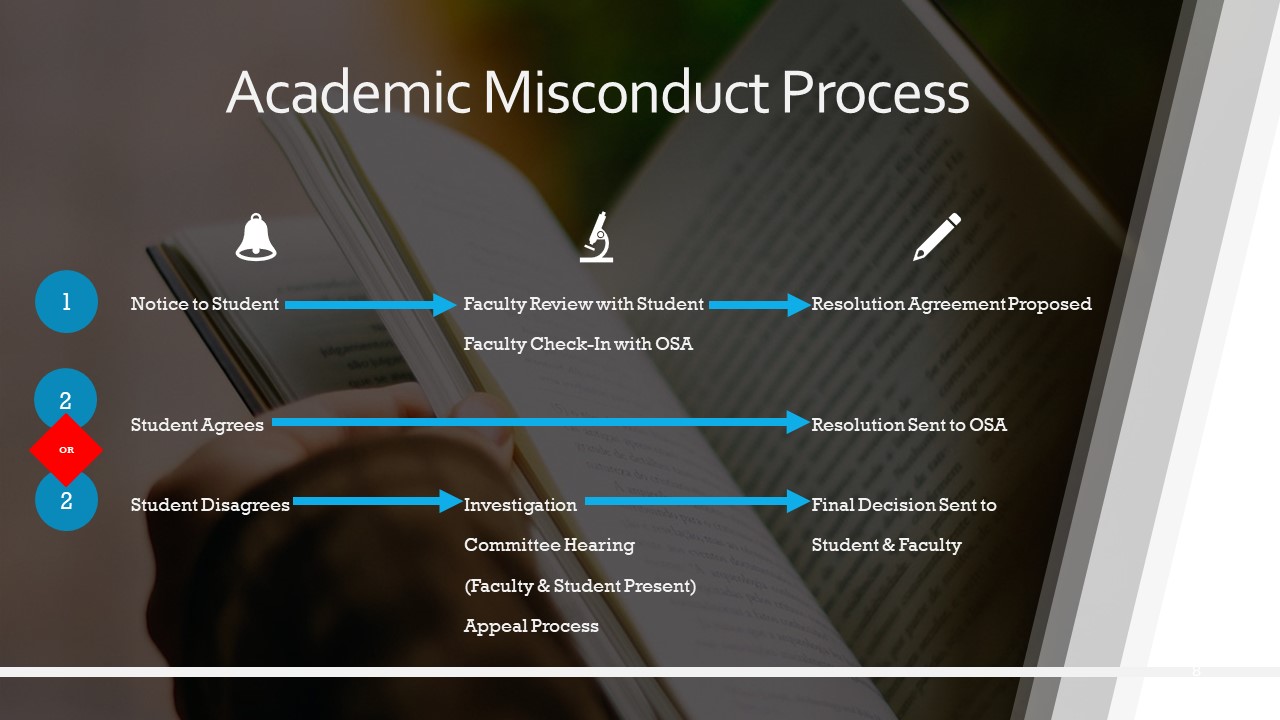Academic Misconduct
Definition
A student may be found to have engaged in academic misconduct, if they engage in any act of academic dishonesty which may include, but is not limited to the following:
- Making use of or providing unauthorized assistance or materials in the preparation or taking of an examination or other academic coursework;
- Acting as a substitute for another person in any academic evaluation or assignment;
- Utilizing another person as a substitute for him/herself in any academic evaluation or assignment;
- Committing plagiarism by presenting as one’s own work, for academic evaluation or assignment, the ideas, representations, or works of another person or persons or oneself without customary and proper acknowledgment of sources;
- Knowingly submitting one’s work for multiple assignments or classes unless explicitly authorized by the instructor;
- Committing an act that materially prevents, impedes, and/or impairs others from completing an academic evaluation or assignment; and/or
- Attempting to influence or change one’s academic evaluation or record, through dishonesty, coercion, threat, and/or intimidation.
Process

Resources
Campus Resources
- Academic Strategies Webinar & Resources
- University of Memphis Library Plagiarism and Academic Integrity Guide
Curated Resources, News, and Research
- January 24, 2022 - Learning, Teaching and Leadership Blog by Sarah Elaine Eaton "An Introduction to Integrity Sciences"
- November 23, 2021 - Inside Higher Ed "How Students See Cheating, and How Colleges Can Contain It"
- September 22, 2021 - Inside Higher Ed "Is Cheating a Problem at Your Institution? Spoiler Alert: It Is"
- August 23, 2021 - Orr, J.E., Orr, K. Restoring Honor and Integrity Through Integrating Restorative Practices in Academic Integrity with Student Leaders. Journal of Academic Ethics (2021).
- March 18, 2021 - The Chronicle's free on-demand webinar "Academic Integrity Online"
- March 17, 2021 - The Chronicle "Good Grades, Stressed Students"
- February 16, 2021 - Inside Higher Ed's podcast "The Key Episode 38: Combating Cheating in the COVID Era"
- February 16, 2021 - The Reinvention Collaborative's free on-demand Town Hall webinar "Academic Honor & Integrity: Challenges & Opportunities"
- September 1, 2020 - Jessica Bernards and Wendy Fresh's (Portland Community College) video for students "Academic Integrity in Remote, Online, or In-Person Classes"
- August 20, 2020 - The Chronicle's Teaching Newsletter "Assessment in a Continuing Pandemic"
- July 22, 2020 - Inside Higher Ed "Best Way to Stop Cheating in Online Courses?"
- April 20, 2017 - Tricia Bertarm Gallant's "Academic Integrity as a Teaching & Learning Issue: From Theory to Practice" in Theory Into Practice
